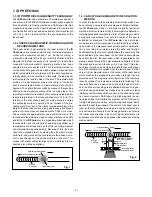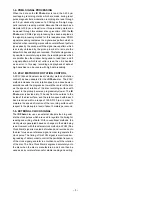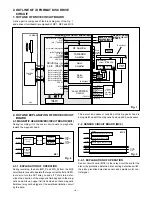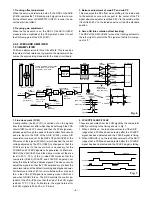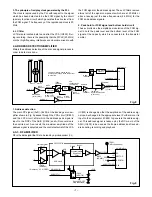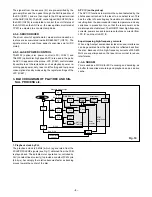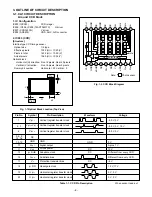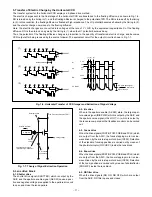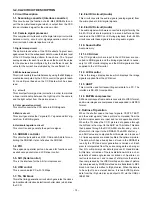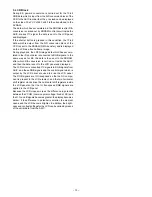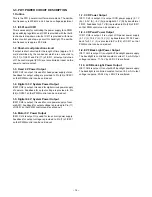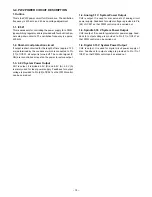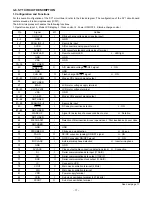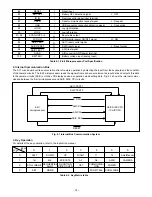
– 3 –
1-4. PRML SIGNAL PROCESSING
When the data on the iD Photo disc is read, the 0.235
µ
m
overlapping recording marks which are made during laser
pulse magnetic field modulation recording are read through
an 0.6
µ
m window by means of a CAD-type ultra-high mag-
netic resolution reading method. Because this window has a
diameter of 0.6
µ
m, at least two or three recording marks can
be viewed through this window at any given time. With the iD
Photo disc, PRML signal processing has been adopted as
the signal processing method for this readable area. PRML
signal processing compares the signal wave pattern which is
detected when recording marks with several different pattern
types pass by the window with the signal wave pattern which
is actually obtained by the pickup in order to recreate the
data which has actually been recorded. This technology makes
it possible to accurately reproduce the recording marks which
are smaller than the window being used to read them, and if
a signal pattern which is not valid is read, then it is handled
as an error. In this way, recording and playback of data at
high densities can be couple with high data reliability.
1-5. ZCLV METHOD OF ROTATION CONTROL
A ZCLV (Zoned Constant Linear Velocity) method of rotation
control has been adopted for the iD Photo disc. The ZCLV
method increases the disc rotation speed on a zone basis in
accordance with the progression toward the center of the disc
as the speed of rotation of the disc recording surface with
respect to the pickup becomes progressively slower. The iD
Photo disc is devided into 12 bands from the outside to the
inside of the disc surface, and the rotation speed within each
band is varied within a range of 1900-3100 rpm in order to
maintain the speed of rotation of the recording surface with
respect to the pickup to a level of about 5 meters per second.
1-6. EXTERNAL CLOCK SIGNAL
The iD Photo disc uses an external clock method to gener-
ate the clock pulses which are used to regulate the timing for
reading and writing of data. With conventional methods, the
clock pulse is generated based on changes in the data being
read. However, with this external clock method, an FCM (Fine
Clock Mark) signal is created beforehand and recorded onto
the disc for use as a reference signal in order to generate the
clock pulse. The timing of this FCM signal is monitored dur-
ing reading of data in order to control the oscillation frequency
of the clock signal generator in accordance with the rotation
of the disc. The Fine Clock Mark is engraved accurately onto
the disc when the disc is manufactured, and it can then be
used as an accurate reference for stable reading and writing.
Содержание IDC-1000ZE iDshot
Страница 45: ...OVERALL WIRING 基板間結線図 ...
Страница 46: ...Apr 01 3 780 NS Printed in Japan SANYO Electric Co Ltd Osaka Japan ...


